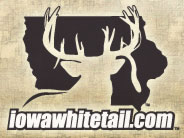I feel that the only way for myself to learn a property is to get out and walk it. Topo maps for me give me great clues but the land must still be walked.
1. I will look for areas that force deer to move through the land a set way. These barriers include steep ravines, rivers,and open areas that give no security or hiding for the deer. A fenceline that runs next to a timber with an open pasture on one side, 10-50 yds of timber, and then a steep ravine after that is a great funnel or pinch point. I have a timber like this that the deer move through constantly.
2. I like oak flats in the timber with several hogbacks(ridges leading up to them)These hogbacks funnel the deer through these flats, not ot mention the acorns are a great food source.
3. One of my favorite spots to hunt is where a river is at my back with a steep bank or drop off. The timber is running along the river and gets narrow as it aproaches an open crop field as the farmer has farmed up to the timber edge as close as possible.
4.These setups are only hunted with the wind in my favor as to how the deer will move throgh the area. I use the topo of the land to my advantage. For instance, with the river at my back favorite stand on my father-in-laws land, it only works with a north to northeast or northwest wind as the river sets to the south of my stand. The topo forces any deer to move through a small funnel of timber that gets narrow as a farmers' field pushes into the narrow edge of timber. This timber is sandwiched between the field edge and the river. Deer have the option of walking the open field in plain site, walking a slippery steep riverbank, or coming through a 20-30 yd wide strip of timber if they want to get to the adjoining timber. This is where I put my wife Sarah last year and where she took her nice buck. Does move through these areas regularly and bucks want to check the trails for scent of any hot does. Works perfect.


